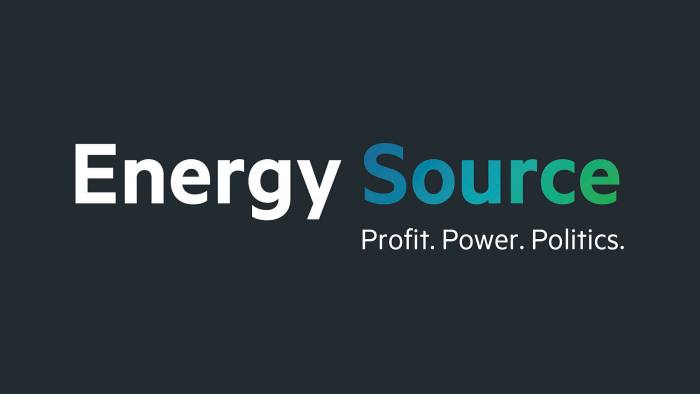A US solar power boom is at risk of stalling just as the country needs a surge in clean energy projects to meet its goals to strip carbon from electricity supplies.
Strong demand from utilities, corporate buyers and some states is colliding with cost inflation and supply congestion, weighing on an industry that has been poised for another record year of growth in 2022.
The government’s independent energy forecaster this month published a rosy outlook for the sector, predicting the US would add 21.5 gigawatts of large, “utility-scale” solar generating capacity this year, nearly half the nation’s total and more than last year’s record 15.5GW.
But some forecasters have been slashing their outlooks and warning of project delays and potential cancellations.
Wood Mackenzie, a consultancy, recently cut its growth forecast for utility-scale projects in 2022 by a third. It now expects total installations, which also include rooftop and smaller-scale projects, will be less than last year.
“There are two realities for the solar industry right now,” said Xiaojing Sun, head of solar at Wood Mackenzie. “The demand for a clean energy product like solar is extremely strong . . . but the other reality is the situation on the ground, given Covid, the complex supply chain situation as well as some of the geopolitical factors.”
“It really feels like the industry is stuck,” Sun said.
Investors will receive new insight into US solar development on Tuesday when NextEra Energy, which owns a top US clean energy developer, reports financial results. The group in November said its wholesale power business had signed contracts for 4.3GW of new solar in 2021 and 2022.
The threatened solar slowdown comes just as the Biden administration is pushing to dramatically expand the technology to meet ambitious goals of making the power grid carbon-free by 2035. A Department of Energy report last year said solar could account for 40 per cent of the nation’s electricity supply by then, up from just about 3 per cent now.
The impasse over US President Joe Biden’s flagship clean energy and social spending bill has damped expectations for the industry’s future growth. But more immediate obstacles stand in the way this year — including created by Biden administration policies, industry executives say.
The US government last June ordered a halt to imports of polysilicon, a raw material for solar panels, from China-based Hoshine Silicon Industry to put pressure on Beijing over the alleged internment of more than 1m Uyghurs and Muslim minorities in Xinjiang province.
The order has ensnared far more shipments than expected. Some international suppliers outside of China have struggled to navigate the complicated new rules for proving their product is free of Xinjiang-linked polysilicon.
Tom Buttgenbach, chief executive of Los Angeles-based 8minute Solar Energy, which develops large-scale projects in California and other states, said his company had shipments from Malaysia and Vietnam detained at the border.
“None of us wants to buy a product that is manufactured with forced labour,” Buttgenbach said. But the solar industry had been “singled out” for using silicon that is widely used in other sectors such as smartphones and computer chips, and there was a lack of clarity around the rules, he added.

US solar industry leaders are also looking with trepidation to February, when the Biden administration will have to decide whether or not to extend tariffs on solar panels and modules from China. The so-called Section 201 tariffs were initially put in place by the Trump administration in 2018 as the nations’ trade war flared.
Analysts say the decision has pitted the US economic competition with China against the Biden administration’s climate policy, as tariffs that hit a Chinese growth industry also threatens to impede clean energy development in the US.
“We don’t know yet how their climate policy and their trade policy are going to line up with each other,” said Abigail Ross Hopper, president of the Solar Energy Industries Association.
Analysts at ClearView Energy Partners, a Washington-based energy consultancy, said in a note last week they expected the administration to extend the tariffs as Biden tries to promote domestic clean energy manufacturing.
The prospect of extended tariffs comes at the US economy contends with broad inflationary pressure. Rising prices have reversed more than a decade of steady declines in costs for solar photovoltaic technology.
Twice weekly newsletter

Energy is the world’s indispensable business and Energy Source is its newsletter. Every Tuesday and Thursday, direct to your inbox, Energy Source brings you essential news, forward-thinking analysis and insider intelligence. Sign up here.
Inflation in the US solar energy industry is likely to surpass 10 per cent this year because of surging prices for commodity inputs such as steel, copper and aluminium, along with elevated shipping rates, said Bruno Brunetti, a global power analyst at S&P Global Platts.
“It has been very surprising, and very unsettling” for the industry after years of declining costs, Brunetti said, adding that the industry “already works with fairly thin margins”.
The US Energy Information Administration said in its latest forecast that solar capacity continued to grow in 2021 despite tariff and supply chain problems. State-level mandates, along with a 26 per cent investment tax credit for solar projects that start in 2022, will continue to support growth, the EIA said. Texas leads states with the most planned solar additions in 2022, with California second, EIA said.
Buttgenbach also sounded a note of optimism.
“Even the last person hiding under a rock has figured out that clean energy is coming,” he said.
Read More:US solar energy boom ‘stuck’ as industry confronts obstacles
2022-01-25 05:00:29
